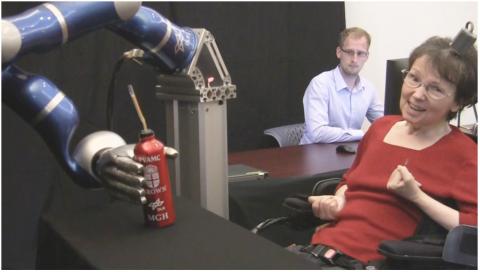The BrainGate research program is focused on developing brain-computer interface (BCI) technologies to restore the communication, mobility, and independence of people with neurologic disease, injury, or limb loss.
Using micro-electrode arrays implanted into the brain, this pioneering research has shown that neural signals associated with intent to move can be “decoded” and used to operate external devices.
The BrainGate system has allowed people with spinal cord injury, brainstem stroke, and ALS to control computer cursors simply by thinking about moving their own paralyzed hand and arm. In early clinical research, people with paralysis have controlled advanced prosthetics, assistive movement, communication devices, and their own paralyzed limbs.
Researchers are developing a new generation of wireless medical neurotechnologies that will be able to record and monitor neural activity to assist in the diagnosis and management of neurologic disease.
